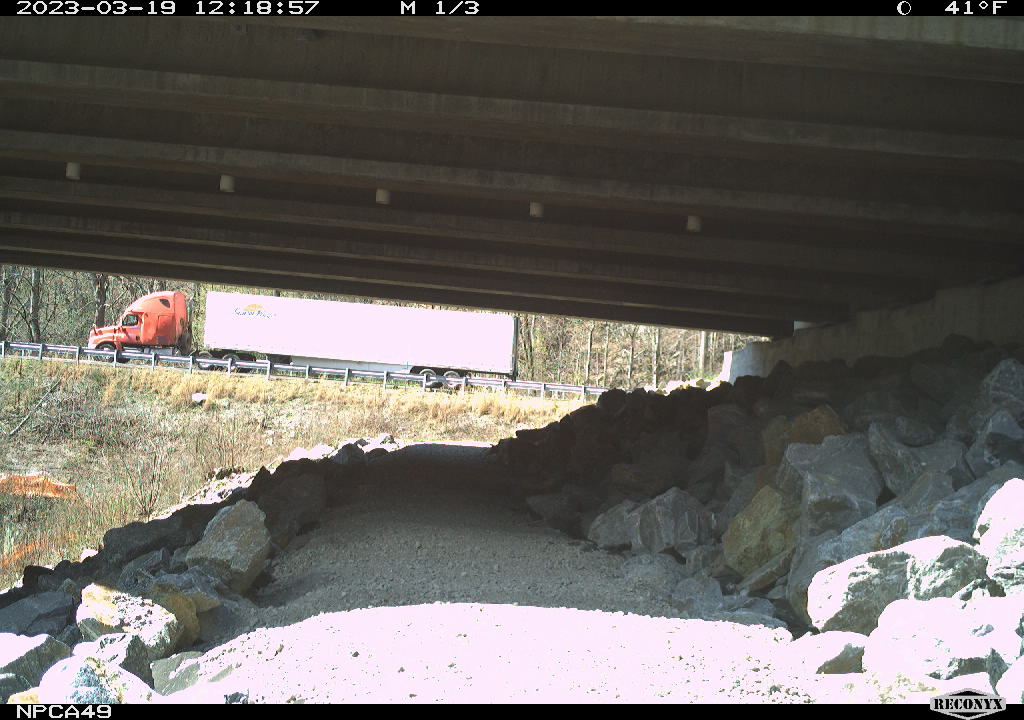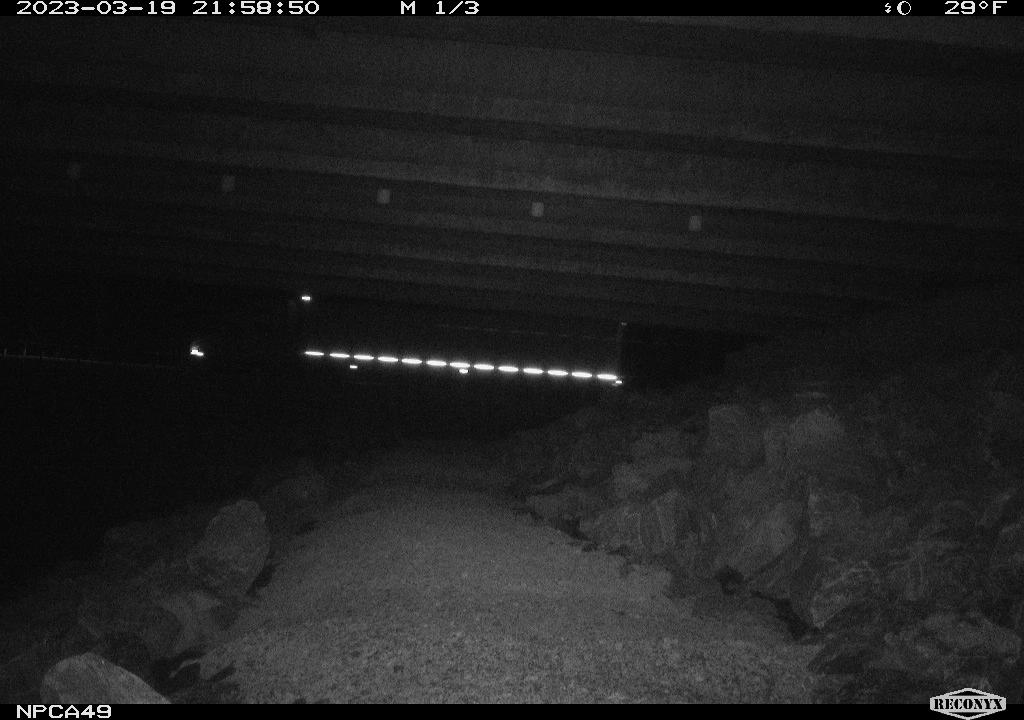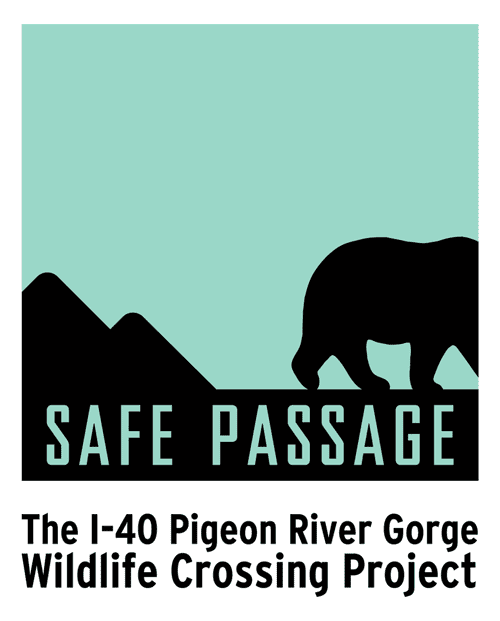After crossings are constructed, how soon can you expect wildlife to adapt to use new, safer passages?
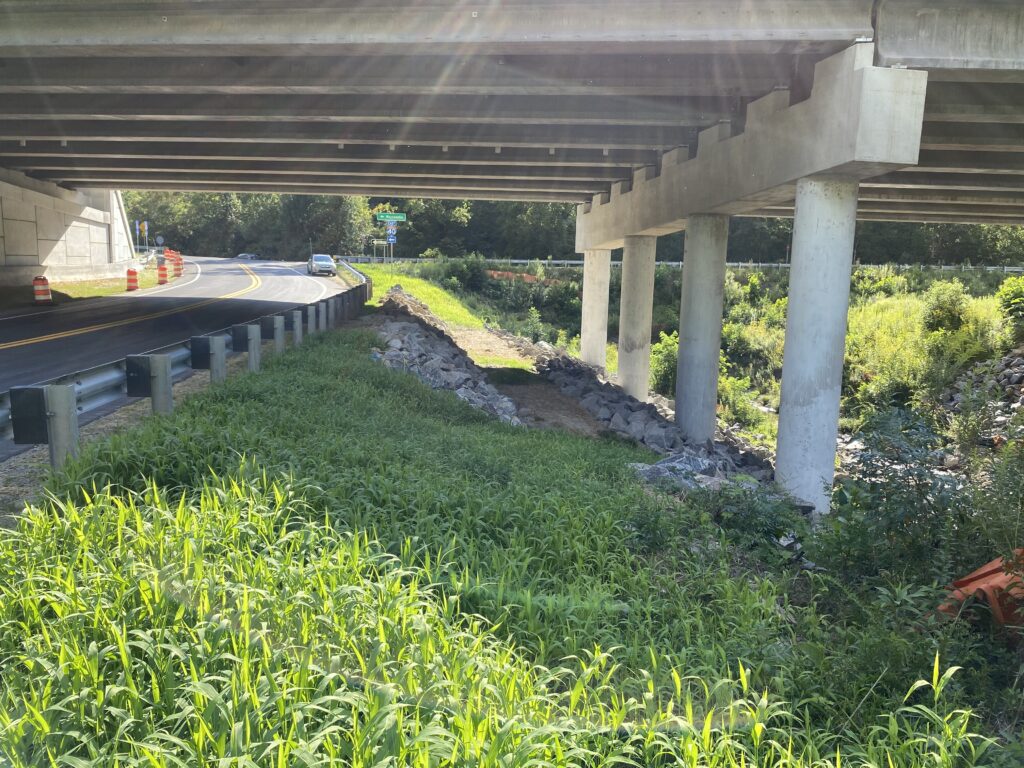
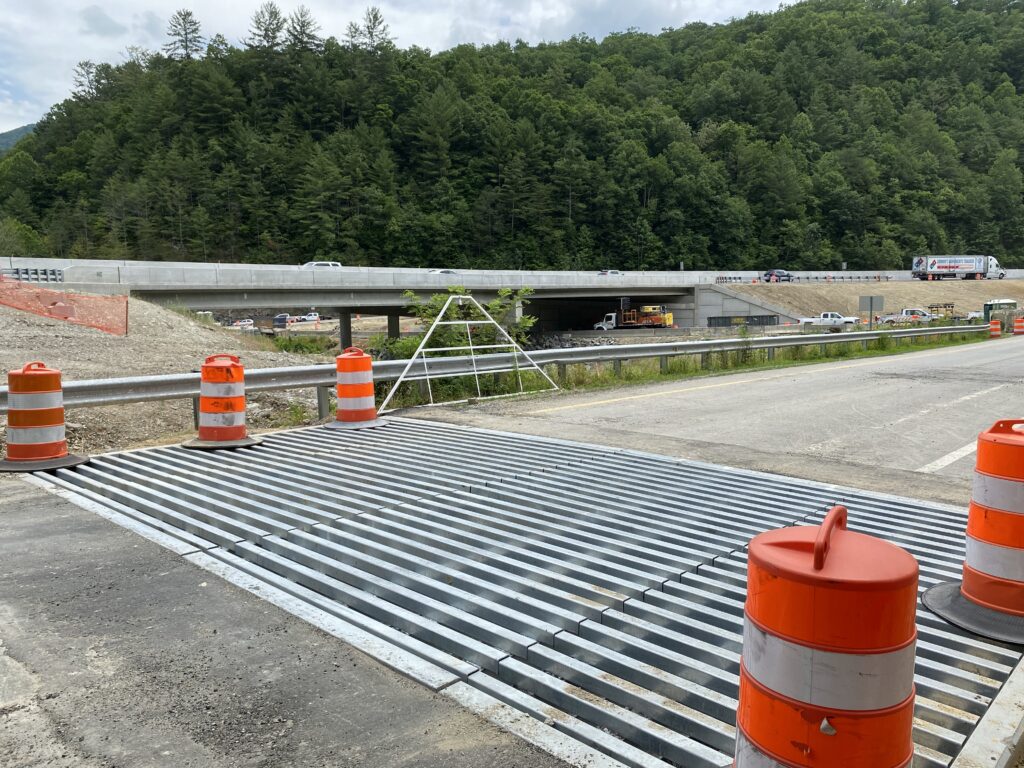
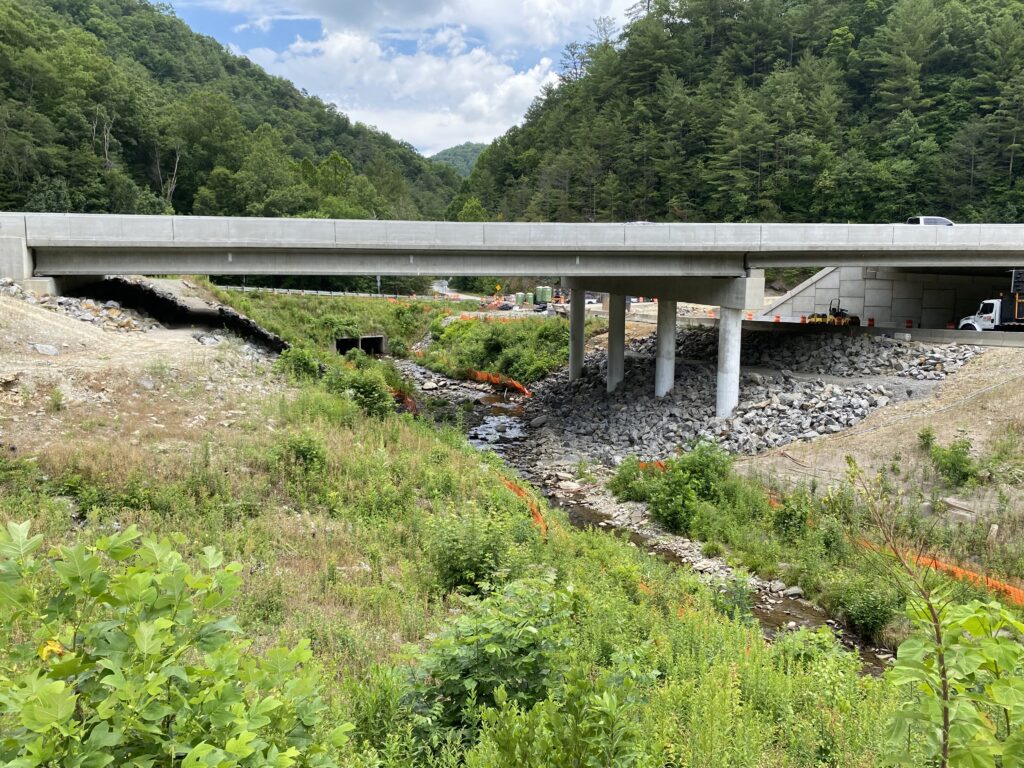
Though infrastructure has been installed at the Harmon Den bridge in North Carolina (pictured above), more still must be done to attract wildlife to use the safer crossing.
Progress is being made at the Harmon Den bridge in North Carolina, where our partners at the N.C. Department of Transportation recently constructed infrastructure for wildlife. Since then, we’ve begun some early monitoring of how wildlife are interacting with the new crossings, which include wildlife-friendly benches and cattle guards and will, in the future, include fencing.
Of course, it may take some time for wildlife to habituate to this improved crossing opportunity in the landscape, especially while vegetation in the area is still recovering from the recent construction. To improve success, it’s important that creekside vegetation — like fast-growing tulip popular, black birch, and red maple — continues to reestablish, as it will provide important cover and protection for traveling wildlife. Consideration should also be given, however, to restricting tractor trailer parking along the on- and off-ramps, which — because engines are often left running — creates noise and garbage (including human waste) that may potentially deter wildlife movement toward the new crossings. Another opportunity to encourage wildlife to use the crossings would be to clean up the crushed concrete spill that occurred during bridge construction along the bank of Cold Springs Creek.
Finally, it is important to note that although the opportunistic wildlife improvements at Harmon Den are important for wildlife connectivity and reducing vehicle collisions long-term, there are limitations to combined human–wildlife structures when compared to standalone structures for wildlife only. The Safe Passage Fund Coalition has made several research-based recommendations for standalone wildlife structures north and south of Harmon Den.
— Steve Goodman, Safe Passage Co-Research Lead
